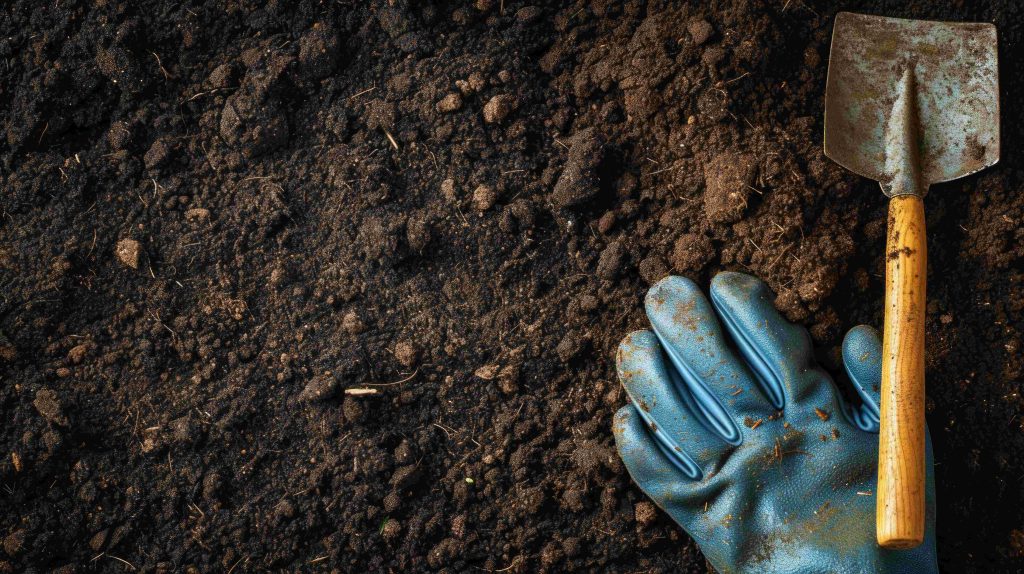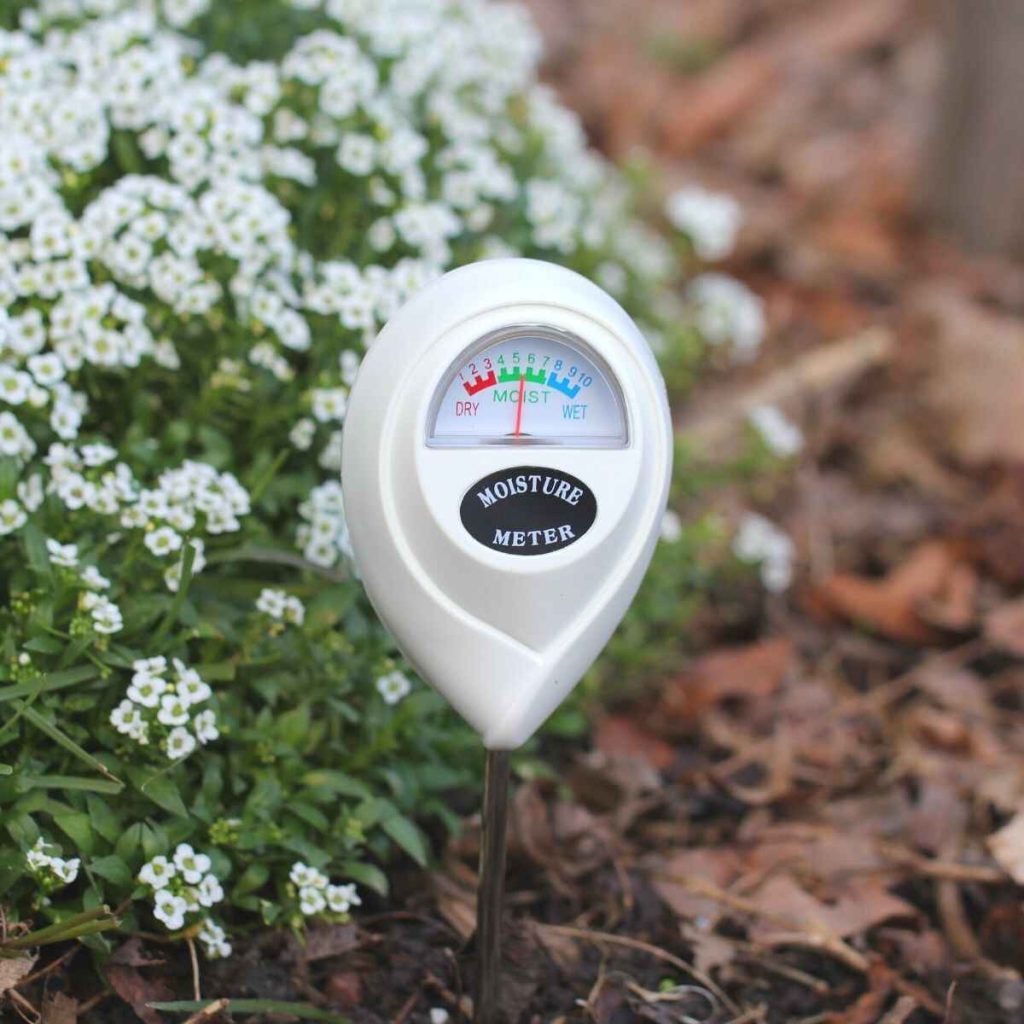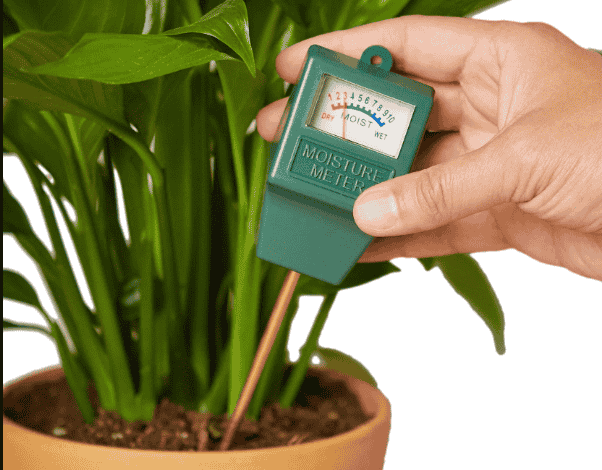When it comes to keeping plants healthy, watering can be tricky. Too much, and you risk root rot; too little, and plants start to wilt. A soil moisture meter is a game-changer for anyone who struggles with knowing when to water. It’s like having a plant “whisperer” that tells you exactly when the soil is thirsty or if it’s still happily moist.
In this guide, we’ll walk you through everything you need to know about using a soil moisture meter, from picking the right one to getting accurate readings. By the end, you’ll feel confident in your watering routine, knowing your plants are getting just what they need. Let’s dive in and take the guesswork out of watering!

What is a soil moisture meter?
So, what exactly is a soil moisture meter? A soil moisture meter is a device that reads the moisture level in the soil, so you don’t have to guess. Imagine a little device that tells you exactly how your plant’s roots feel—whether they’re cozy and hydrated or crying out for water. That’s the magic of a soil moisture meter!
Types of Soil Moisture Meters
There are a couple of different types, and picking the right one can make a big difference. Some meters are analog, with simple needle indicators. These are straightforward and easy to use. Others are digital, showing exact moisture percentages. If you like precise numbers, digital might be your go-to.
Then, there are multi-function meters, which do more than just measure moisture. They can also check soil pH or sunlight levels. If you’re serious about plant care, a multi-function meter could be a handy all-in-one tool.
How Do Soil Moisture Meters Work?
Soil moisture meters have a metal probe that goes into the soil, sensing how wet or dry it is. It’s a bit like a thermometer, except it’s measuring water. This simple, helpful tool can make plant care a whole lot easier, especially if you’re prone to over- or under-watering.
Understanding these options and how they work helps you pick a moisture meter that’s perfect for your plants. Ready to dive deeper? Let’s find the best one for you!
How do I choose the best soil moisture meter?
Picking the right soil moisture meter can feel a bit overwhelming with all the options out there, but it’s really all about finding the one that fits your plant care style and needs. Let’s look at the key factors to consider and some popular choices for different types of plants.
- Accuracy: Accuracy is top priority! An effective moisture meter should reliably show the real moisture level in your soil. Higher-quality meters generally give more accurate results, so it’s worth checking reviews to find one that has good feedback on precision.
- Ease of Use: Some meters are as easy as “stick it in and read the dial,” while others come with digital displays and multiple settings. If you’re new to plant care or prefer simplicity, a basic analog meter might be your best bet. If you’re tech-savvy, you might enjoy a digital model with extra features.
- Durability: Especially if you’ll be using it outdoors, look for a sturdy meter that can withstand a bit of wear and tear. High-quality materials, like rust-resistant metal probes, can help ensure your meter lasts longer.
- Additional Features: Some moisture meters do more than just measure water levels—they also measure pH or light intensity. These are great for plant enthusiasts who want an all-in-one tool. If you’re caring for specialized plants that require precise pH levels or light conditions, this can be a fantastic option.
Recommendations for Specific Needs
- For Indoor Plants:
Recommended Product: XLUX Soil Moisture Meter
This analog meter is simple, affordable, and reliable. It’s a great choice for indoor plant lovers who want a quick moisture reading without needing extra features. - For Large Pots:
Recommended Product: Sonkir Soil pH and Moisture Meter
This is a multi-function meter that’s sturdy enough for outdoor use and gives readings for both moisture and pH levels. Perfect for gardeners who want a bit more data. - For Succulents and Cacti (Low-Water Plants):
Recommended Product: Dr. Meter Moisture Sensor Meter
This meter has a narrow, precise probe that’s ideal for plants that only need occasional watering. It’s accurate and helps prevent over-watering, which is essential for succulents.
Choosing a meter that matches your plant setup will make it easier to give each plant the perfect amount of water. Once you’ve got the right one, you’re all set for more confident and stress-free watering! Also, if you want a review of these products, then let us know in the comment!
How to Use a Soil Moisture Meter?: Step-by-Step Guide for Perfect Watering
Now that you’ve got your soil moisture meter, it’s time to put it to work! Using it is super simple, but a few small steps can make a big difference. Follow this guide to get the most accurate reading and keep your plants happy.

Step 1: Preparing the Meter
Make sure your meter is clean and ready to go. If it’s brand new, you’re all set; if you’ve used it before, wipe off any soil residue on the probe to avoid skewed readings. Some digital meters might need quick calibration, so check the instructions just to be sure.
Step 2: Inserting the Probe
Here’s where the magic happens! Place the probe halfway between the plant’s base and the edge of the pot. If you’re checking a bigger pot, try measuring a couple of different spots to get an overall idea of the soil moisture. Insert the probe about halfway down to reach the root zone—that’s where the most important moisture level is.
Step 3: Reading the Meter
Once the probe is in, check the reading. If you’re using an analog meter, you’ll see the needle move to a moisture range. Digital meters will display a number, typically showing a percentage or a 1-10 scale. Lower readings (like 1-3) usually mean it’s time to water, while higher readings (7-10) suggest the soil is still moist. It’s as simple as reading a clock!
Step 4: Interpreting Results and Watering Accordingly
Now that you have your reading, it’s time to decide if your plant needs a drink. For most indoor plants, a “dry” reading means it’s time to water, while a “moist” level often means you should wait a bit. If you’re using a scale, plants usually prefer watering when the reading is in the lower range, around 1-3. Don’t forget that some plants—like succulents—need less frequent watering than others, so adjust accordingly.
Following these easy steps every time you check your plants will help you take the guesswork out of watering. With just a little practice, you’ll know exactly what your plants need to stay green and healthy!
Additional Tips for Using a Soil Moisture Meter Effectively: Maximize Accuracy for Happy Plants
Now that you know the basics of using a soil moisture meter, let’s talk about how to get the most accurate readings and avoid common mistakes. These tips will help you make sure your plants are getting just the right amount of water!
1. Be Consistent with Placement and Depth
Always place the probe in the same spot and to the same depth for each check. This consistency makes it easier to compare results over time. For larger pots, measure a couple of different areas to get a more accurate picture.
2. Check Your Meter Regularly
Sometimes the probe can collect dirt or mineral buildup, especially if your water contains minerals. A quick wipe after each use keeps your readings accurate and the meter in good shape. Clean it regularly to prevent any inaccurate readings that might mislead you.
3. Know When to Use It
Use your moisture meter before your regular watering times rather than after. If you water first, the readings may not be accurate, as the soil surface could be moist but not reach the roots. Measuring beforehand gives you a true picture of how much water your plant actually needs.
4. Avoid Leaving the Probe in the Soil
While it might be tempting to leave the probe in the pot, this can actually damage the meter. Continuous exposure to moisture can lead to rusting and reduce accuracy over time. Instead, measure, read, and then remove it until the next use.
5. Keep Environmental Factors in Mind
Temperature, sunlight, and even the type of soil you’re using can impact soil moisture. For instance, soil dries out faster in warmer weather or when the plant is getting a lot of sunlight. Understanding these factors can help you interpret your readings better and water accordingly.
These simple tips will make a big difference in keeping your plants healthy and hydrated. With a little consistency and care, your soil moisture meter will be a trustworthy guide for watering!

Troubleshooting Common Issues with Your Soil Moisture Meter: Get Accurate Results Every Time
Even the best tools can sometimes have issues, and soil moisture meters are no exception. If you’re getting readings that don’t seem right or you’re facing other challenges, here are a few quick fixes and tips to keep your meter in top shape!
1. Inaccurate Readings
If your meter seems off, it might need a little cleaning or adjustment. Sometimes, dirt or minerals can build up on the probe and interfere with accuracy. Try wiping it down with a damp cloth after each use. If it’s a digital meter, check if it needs to be recalibrated according to the manual.
2. The Meter Doesn’t Register Moisture Properly
If your meter is showing “dry” even in obviously wet soil, there could be an issue with the probe. Test it in a cup of water; if it still reads “dry,” it may be time for a replacement. Analog meters can sometimes have calibration issues, while digital meters might need a new battery.
3. Difficulty Reading Multi-Function Meters
Multi-function meters, which measure moisture, pH, and light, can sometimes feel overwhelming with all the information they provide. If you’re only focused on moisture, remember to set it to the correct mode or display. Take a moment to familiarize yourself with each reading to avoid confusion.
4. Regular Maintenance for Long Life
Just like plants, your meter needs a little TLC to stay in top shape. Make it a habit to wipe down the probe after every use and store it somewhere dry. Avoid leaving it in the soil or outdoors, as this can cause rusting or affect performance over time.
5. Replace Batteries When Needed
For digital meters, low batteries can sometimes cause inaccurate readings or make the display hard to read. Replace the batteries regularly and keep spares on hand so you’re always ready to check on your plants.
FAQs on Using a Soil Moisture Meter: Your Burning Questions Answered!
Got questions about soil moisture meters? You’re not alone! Many plant lovers wonder about their best practices and tips for using these handy tools. Here are some of the most common questions and answers to help you get the most out of your moisture meter!
1. How often should I use my soil moisture meter?
It’s a good idea to check your moisture meter regularly, especially before your scheduled watering time. For indoor plants, checking once a week is typically sufficient. For outdoor plants, you might want to check every few days, especially in hot weather.
2. Can I use a soil moisture meter for all types of plants?
Most soil moisture meters work well for a variety of plants, but some may prefer specific soil conditions. For example, cacti and succulents thrive in dry conditions, while tropical plants often prefer more moisture. Just keep your plant’s specific needs in mind when using the meter.
3. What should I do if my meter shows moisture but my plant looks droopy?
If your meter shows that the soil is moist but your plant still looks droopy, check for other issues. Overwatering can lead to root rot, which makes plants droopy despite having wet soil. Ensure your pot has proper drainage, and if needed, let the soil dry out before watering again.
4. Are digital moisture meters better than analog ones?
It depends on your preference! Digital meters often provide more precise readings and additional features, like pH measurement. However, analog meters are straightforward and require no batteries. Choose based on what you feel comfortable using.
5. Can I use a soil moisture meter for outdoor gardening?
Absolutely! Soil moisture meters are great for outdoor gardens, too. Just remember to choose a durable model that can withstand outdoor conditions. Checking soil moisture in your garden can help you manage watering better and keep your plants healthy.
6. How long do batteries last in a digital soil moisture meter?
Battery life can vary, but most digital soil moisture meters last several months to a year with regular use. Keep an eye on your meter; if it starts giving inaccurate readings, it might be time to replace the batteries.
7. Is it okay to use a soil moisture meter in different types of soil?
Yes, you can use your moisture meter in various soil types, but keep in mind that some soils hold moisture differently. For instance, sandy soil drains quickly, while clay soil retains water. Always consider the soil type when interpreting your readings.
8. Can I leave a soil moisture meter in the soil?
It’s best not to leave your soil moisture meter in the soil for extended periods. While it might be convenient, doing so can damage the meter over time. Moisture can lead to rust, especially in the metal probes, and dirt buildup can affect accuracy. Instead, remove the meter after each use to keep it in good condition. This way, you’ll ensure accurate readings each time and prolong the life of your moisture meter. Store it in a dry place, ready for your next plant check!
Congratulations! You’re now equipped with all the knowledge you need to use a soil moisture meter effectively. By understanding how to measure soil moisture and interpreting those readings, you can give your plants exactly what they need to thrive.
Remember, using a moisture meter is all about making informed decisions. It helps take the guesswork out of watering and ensures your plants are getting the right amount of moisture. With your new skills, you’ll be a more confident plant parent, and your leafy friends will reward you with lush growth and vibrant health.
So, get out there and start checking your plants! Whether you’re nurturing indoor greenery or outdoor blooms, a soil moisture meter is your best ally for successful gardening. Happy watering, and may your plants flourish!

